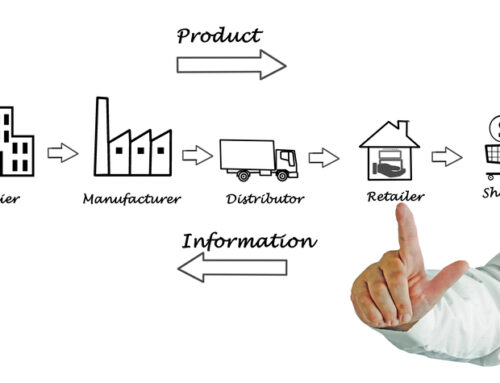In a world of short attention spans and instant gratification, fast fashion has grown to an all time high. Once hailed as a fabulous disruptor of traditional fashion cycles, the ‘see now, buy now” retail model facilitates the transition of new fashions straight off the runway and into our closets faster than ever before. It has made the latest styles — previously only accessible to some — now available to all, at ridiculously low prices. But what’s the real cost?
To understand how fast fashion has become so prevalent in our society, we have to look at where it came from. The Industrial Revolution brought much innovation and created modern manufacturing as we know it. Consumerism was also greatly affected with the advent of efficiently mass-produced goods that made access to new and interesting products a reality for everyone. The streamlined manufacturing process developed during the Industrial Revolution and modeled after Henry Ford’s automobile factory methods of specialization and repetition, has shaped how all fashion is spread and mass-produced cheaply around the world.

In the past decade, shortened fashion cycles were propelled to the forefront by fast-fashion mega-giants like Zara, H&M and Forever 21, who proved that efficiency in manufacturing and quick shipping times can be a reality. The result is unbelievably low prices made possible through global sourcing to Eastern countries, driving mass consumption in the Western world and setting expectations of price/value throughout the retail industry.
Although positive changes seem to be shaping fashion for the better, the long term negatives (ethical, environmental, and social) may have far greater consequences for this industry and world. Traditional stores are forced to mark down their product offerings to compete with the low prices at fast-fashion retailers. There has been an alarming rate of store closings by major traditional retailers. As Time reported, “Consumers have grown steadily more comfortable making the bulk of their purchases online, and they’ve come to expect low prices, deep discounting, and a huge selection of rapidly changing merchandise — all factors that undercut the classic, slow-moving department store model.” Earlier this year Macy’s announced their plan to close 68 store locations while other department stores like Sears, JCPenney, and Nordstrom are warning shareholders of ongoing sales declines.
Store closings are not the only result of low-cost garments. Quality has gone down the drain, and mass manufacturing and globalization must accept part of the blame. According to the National Center for Biotechnology Information Research, “Globalization has made it possible to produce clothing at increasingly lower prices, prices so low that many consumers consider this clothing to be disposable.” This change in consumer perception is a big reason people buy clothes at higher volume than ever before: “If they’re disposable, and I can buy two for the price of one, then why not buy lots of them?” seems to be the general attitude.
I’m as much to blame as the next person for buying this crap. Who doesn’t love a maxi dress for $12? Shoes for $25? And even if it falls apart after three wearings, I can just throw it away or chuck it in the Goodwill and hope someone else can fix it. It would literally cost me more to repair it than just buy a replacement.

The more clothes we buy, the more we throw away. According to the EPA Office of Solid Waste, “Americans throw away more than 68 pounds of clothing and textiles per person per year.” These garments are piling up in our landfills and adding significant amounts of harmful waste to our environment. Clothing waste is especially harmful because of the methane gas released into the atmosphere, often as a result of polyester, popularly used in fast-fashion retail. According to Huffington Post, “Methane gas is 28 times more effective than carbon dioxide at trapping heat.” Fashion is having a greater and greater impact on the state of global warming every day.
The consequences of fast fashion are not limited to economic and environmental; there are ethical and human rights issues as well. From overworked and underpaid laborers to poor workplace conditions, fast fashion is doing a disservice to humankind. The 2013 collapse at the Rana garment factory in Bangladesh killed over 1,000 people. The factory conditions were found by investigators to be appalling. However, according to The Atlantic, many of the similar conditions that caused this tragedy to occur are still in place today in other garment factories.

We as consumers have the power to shift the tide against this type of negative consumerism. A “slow fashion movement” has begun appearing recently, appealing to and created by the more sustainable and sartorially conscious among us. A Mic article on slow-fashion describes the movement: “Slow fashion asks shoppers to change their consumption habits in favor of higher quality pieces bought more selectively over time.”
Manufacture New York is a fashion design incubator that encourages independent designers to think about the negative impact their clothing might have on the world. They’re not alone — many organizations and companies like it are popping up around the States and are fighting back against our cheap clothes obsession.
American consumers can break the cycle, but they’ll need more incentive than just feeling good about the planet to do so. It’s also got to make economic sense to choose quality over quantity. The “maker movement” is a good solution, rebuilding lost skills in America and an audience for small-batch manufacturing of higher quality goods, but it can’t displace the mass consumption marketplace easily.
And maybe that’s ok. Maybe we can only do a little bit at a time, carving out a niche industry or saving a few metric tons of carbon pollution. But it’s a start, and every movement has to start somewhere.




